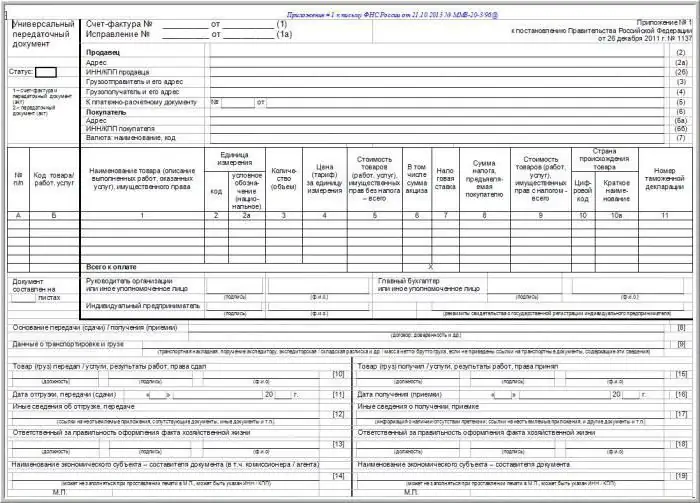2026 Author: Howard Calhoun | [email protected]. Last modified: 2025-01-24 13:10:37
Changes in tax legislation that came into force at the beginning of 2017 led to the fact that the administration of almost all mandatory payments to non-budgetary funds turned out to be assigned to the tax authorities. The only exceptions were contributions for compulsory insurance against industrial accidents, in common parlance for injuries. They are still fully handled by social security.
Changes in reporting
The grandiose change of revenue administrators naturally led to a change in reporting forms, thanks to desk audits of which the discipline in paying contributions is assessed. Previously submitted reports:
- to the Pension Fund - for contributions to compulsory pension insurance and compulsory he alth insurance;
- to the Social Insurance Fund - for temporary disability insurance contributions (for sick leave payments) and for injury contributions.
Now the tax authorities have developed their owna form convenient for them regarding contributions to the OPS, to the FFOMS and to the FSS in terms of contributions for temporary disability. Accordingly, social insurance from the old 4-FSS report excluded everything related to sick leave, and left only that related to injuries. Reports on disability contributions are now one of the sections of the corresponding calculation for the tax. Thus, a new form of 4-FSS appeared.

Providing 4-FSS: dates and method of data transmission
Form 4-FSS is still provided by all organizations where, in accordance with the concluded contract, employees work for wages. This equally applies to both public and private organizations, and individual entrepreneurs. The latter, if they do not have employees, pay these contributions at will and do not submit Form 4-FSS. Appropriate notice to the fund is not required.
Form 4-FSS can be filled out and submitted to the department of the fund, where the organization is registered, both in paper and in electronic form. That is, the transmission is carried out both by direct presentation and through electronic communication channels. Moreover, there is an interesting nuance: the transfer can be made both through special operators and directly through the official website of the FSS.

Report deadlines have not changed:
- in paper form - until the 20th day of the month following the reporting quarter;
- via electronic channels - up to 25day of the month following the reporting quarter.
Sanctions for late filing of accounts
If the completed 4-FSS form was not received by the social insurance department on the set dates for any reason, then the sanctions established by law are applied to the debtor: administrative fines are imposed on him. Both the organization and the official (most often the leader) are fined. For an organization, the amount of the fine will be from 5 to 30 percent of the total accrual of contributions for the quarter for which the data was not submitted on time (but not less than a thousand rubles), for the head from three hundred to five hundred rubles by decision of the justice of the peace.
How to fill out a report: innovations
A sample of filling out the 4-FSS, which has been in force since October 2017 (the reporting period is nine months), is available on most accounting websites. There are also explanations for filling out on the official website of the FSS.

It contains a number of changes:
- on the title page there is a field for data on the organization's belonging to a certain budget level;
- the indicator of the number of employees is replaced by the indicator of the average headcount;
- in table 6, the indicators instead of columns are posted by row;
- in table 2, it is not required to separately fill in information on benefits issued to foreigners from the EAEU.
4-FSS: filling pattern
Under the new rules, all information related to disability insurance premiums has been removed. Filling 4-FSS is carried out only bysection on injuries. She is half as short.

- Each page must contain an individual registration number, which is in the notice of registration as an insurer, which was assigned by the fund.
- Table 1 reflects the calculation base for premiums for injury and occupational disease insurance. The value of the tariff is associated with the class of professional risk, which is assigned to organizations in accordance with the norms of the current legislation in accordance with OKVED, recorded in the statutory documents of the enterprise. The class is usually indicated in the corresponding notification from the FSS, issued upon registration of a legal entity as a payer. There can be several classes - depending on the number of activities. If there is only one class, then the 4-FSS is filled in once. If there are divisions with different classes, then the calculation is filled in as many times as there are classes.
- Table 1.1 is presented only by those legal entities that transfer their employees to other organizations for a certain time.
- Table 3 is filled in if they made payments on sick leave issued due to work-related injuries or occupational diseases, or spent money on injury prevention. The entire list of expenses can be found in Law 125-FZ. Special appraisal costs are required to be reflected in this section only if they were authorized by the fund. If the funds of the enterprise were not spent or expenses were made without the prior consent of the fund, then information aboutcosts are not included in the report. For the permission of the fund for a special assessment, which guarantees the subsequent compensation of the costs incurred at the expense of social insurance funds, the application and the necessary package of documents are submitted to the fund before August 1. The application will be reviewed by the Foundation and a decision will be made to allow or prohibit a special assessment on account of the payment of contributions for injuries.

- Table 4 is filled in in case of accidents at work.
- Table 5 reflects the number of jobs that require a special assessment.
Should I hand over zero?
In the current work of organizations, there are situations when for some reason activities are not carried out or there are no employees. Accordingly, contributions from salaries are not charged and not paid. But such cases do not exempt from reporting. Zero calculations are presented according to the general rules. Filling out the 4-FSS form zero for a number of positions is absolutely no different from a regular report. The title and a number of tabular forms (1, 2, 5) must be filled in. The dates for the delivery of zero are the same.
What to do if errors are found
In case of self-identification of errors made in the preparation of the 4-FSS report, it is necessary to correct them and notify the fund of new indicators. But this rule applies only in cases where the calculated amounts of payments were underestimated. In cases of overstatement, there is no obligation to notify the Fund. All relationships can be adjusted when the next cumulative calculation is provided.
In caseallowed understatement, an adjustment is made to fill in the 4-FSS. A sample and explanations of the rules for compiling adjustments can also be found on almost all resources on the Web dedicated to accounting and on the official website of the FSS. The title must indicate that this is an updated calculation and indicate the number of the adjustment.

Important! When compiling the clarification, it is precisely the form of the report that was in force in the period when the calculation was submitted that is used. That is, if errors are found in 2016, then it is the form of that year that is applied, taking into account all sections relating to sick leave. If mistakes were made specifically in terms of calculations for disability insurance premiums for 2016 and earlier periods, then the revised calculation should be submitted to the fund, and not to the tax office.
What is not the basis for calculating contributions
When making the calculation, the responsible employee should remember that not all payments made to employees are subject to injury contributions. The corresponding exceptions in total terms must necessarily be reflected in table 6 of the calculation. Injury contributions are not charged on payments to foreigners temporarily residing in the territory of our state, and on the amount of paid disability benefits at the expense of the employer.
Important! When concluding a contract, insurance premiums for disability payments are not charged, but injury insurance may well be one of the sections of the contract. In such cases, contributionsare paid and information about them is included in the calculation.

Conclusion
Summarizing all of the above, it should be noted:
- The 4-FSS filling patterns from 2017 differ from the previous ones with the exception of sections relating to sick leave insurance premiums, which are now administered exclusively by the tax authorities.
- The obligation to submit reports to the FSS remains, as well as the terms, forms and methods of submission.
Recommended:
Filling out TORG-12: rules for filling out a consignment note

This article discusses the primary documents, the TORG-12 consignment note, the rules for filling out, the form and the form, its purpose and the requirements of the inspection inspections
Correct completion of the book of the cashier-operator (sample)

Each area of accounting has its own subtleties, rules and approaches. Working with cash flow is an occupation with great responsibility and psychological stress for many people. It can be facilitated by excellent knowledge of all accounting rules and activities in this area
Samples of filling out a consignment note. Rules for filling out a consignment note

In order for the company's activities to fully comply with the requirements of the law, when filling out the documents, you must follow the established instructions. This article discusses samples of filling out a consignment note and other accompanying documents, their purpose, structure and meaning in the activities of organizations
Filling out a sick leave: the procedure for filling out, norms and requirements, an example

To receive a payment from the employer, it is necessary that the sick leave is filled out correctly. How to do this and how to work with sick leave in general is described later in the article. An example of filling out a sick leave will also be given below
The flag pattern in technical analysis. How to use the flag pattern in Forex

Technical analysis has incorporated a large number of repetitive patterns of price movement. Some of them have proven themselves better than others as a source of forecast. One of these models is the flag or pennant. A correct understanding of this pattern can be the basis for many profitable strategies

